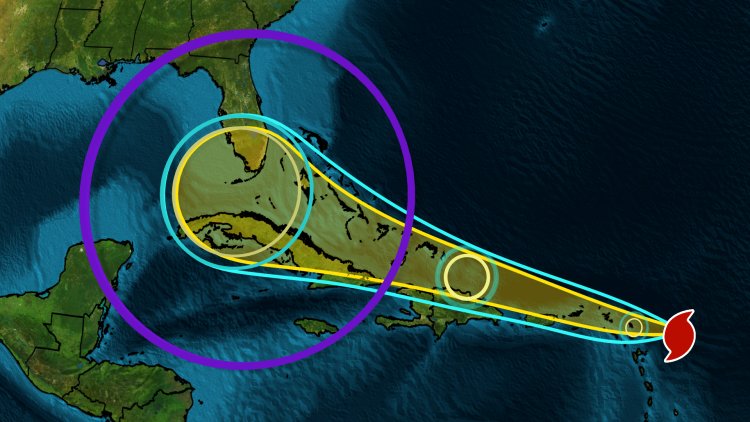Atlantic Hurricane Season 2025: Storm Names, Forecast, and Prognosis
The Atlantic hurricane season is rapidly approaching, even though it may still feel like spring in many parts of the United States. If preliminary predictions are any guide, 2025 may be another stormy year in the tropics.

Furthermore, a reliable prognosis is already illustrating the future, even if the National Oceanic and Atmospheric Administration (NOAA) has not yet issued its official seasonal outlook, which is scheduled to be announced in late May.
A Look Ahead: What the Forecast for 2025 Tells Us
This month, the early 2025 projection was provided by the Colorado State University (CSU) hurricane research team, which has been providing seasonal forecasts for more than 40 years. The lesson learned? Anticipate a season that is above average, driven in part by the Pacific's brewing instability and the Atlantic's continued warmth.
The CSU forecast calls for the following:
17 storms with names
Nine hurricanes
Four powerful hurricanes (Category 3 or above)
By way of reference, NOAA's 30-year average (1991–2020) is:
14 storms with names
Seven hurricanes
Three powerful hurricanes
Therefore, it appears that this season will be busier than normal.
These are not merely numbers, though. Landfall probabilities, which provide a sobering dose of realism, are also included in CSU's estimate. A hurricane is 33% likely to make landfall along the Gulf Coast, which stretches from Texas to the Florida Panhandle. That figure has historically been around 27%. Even while it might not seem like much of a difference, those few percentage points are important when storm predicting.
What is Driving This Prediction?
Warmer-than-normal sea surface temperatures in the tropical and subtropical Atlantic are a primary cause of the above-normal activity. Hurricanes are fueled by warm water, which increases their intensity and duration.
The El Niño Southern Oscillation (ENSO), a climate pattern influenced by tropical Pacific ocean temperatures, is this year's wild card. Global weather patterns, particularly those in the Atlantic hurricane basin, are influenced by ENSO.
Warmer Pacific waters, or El Niño, have a tendency to stifle Atlantic hurricanes.
Cooler Pacific waters, or La Niña, usually increase the likelihood of hurricanes.
Conditions that are neutral? That is the gray region, and it is precisely where we could end ourselves this year.
Forecasters anticipate that La Niña will transition to neutral conditions this year, but there is still some "meteorological murkiness" on how that will transpire during the busiest months of August and September.
Watch for more accurate forecasts as the season draws to a close because CSU intends to update its seasonal forecast three more times this year: on June 11, July 9, and August 6.
Who Are the Names of the 2025 Hurricanes?
Every six years, the list of names for Atlantic storms is changed, however if a storm is exceptionally destructive or fatal, names may be retired. The 2019 list is being utilized again in 2025, although there is one significant difference.
Dexter has taken the position of Dorian, which was decommissioned following the devastating Category 5 hurricane that devastated the Bahamas in 2019.
The complete list of Atlantic storm names for 2025 is as follows:
Andrea
Barry
Chantal
Dexter (new)
Erin
Fernand
Gabrielle
Humberto
Imelda
Jerry
Karen
Lorenzo
Melissa
Nestor
Olga
Pablo
Rebekah
Sebastien
Tanya
Van
Wendy
Now is the time to prepare your emergency plan if you live in a hurricane-prone area, not when a storm is already churning toward your shore. Keep yourself updated on reliable weather sources, such as the National Hurricane Center (NHC), stock up on necessities, verify your insurance coverage, and be aware of your evacuation zone.
In conclusion: Observing the Atlantic
Hurricane season in 2025 is expected to be crowded, erratic, and possibly hazardous, particularly if sea temperatures continue to rise and ENSO plays a hand that is not in your favor.
This is the year to pay attention early, whether you live near the shore, are interested in tracking storms, or are simply trying to keep prepared. Even "normal" seasons can swiftly devolve into chaos due to the warming of the Atlantic and the fact that storms no longer wait until August.







